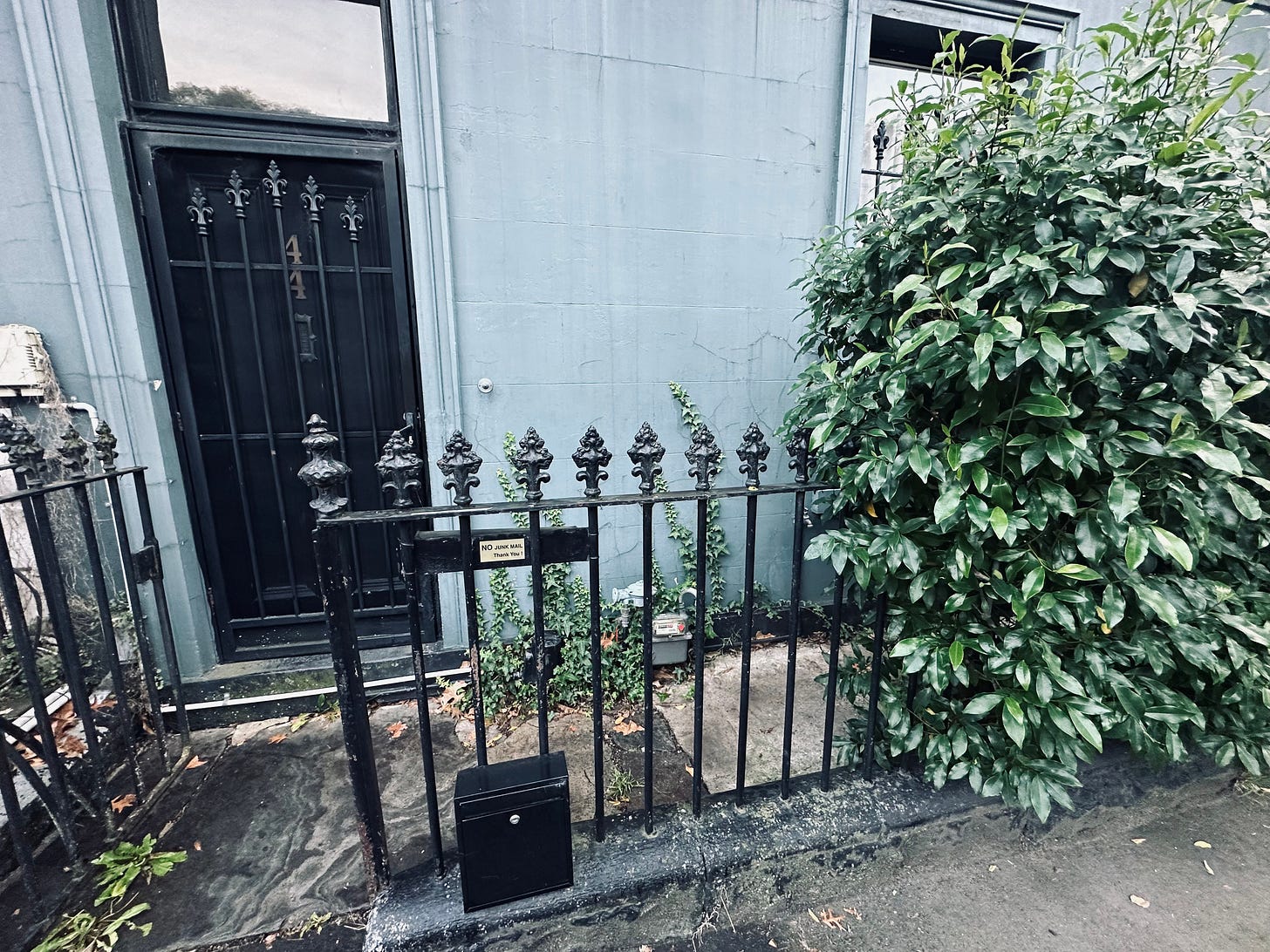1. Carlton
The inner city shifts the balance between built and garden in favour of the built. But a crevice is purchase, and proof of the slow inevitability of decay, a process in which the plant world will one day win out. The slate pavers are collaborators with the ivy, a little beachhead, a tempering of the late Victorian formality. The grainy irregularity of that stone is something close to wildness; a world of rough rock constrained by a thin black line of wrought iron.
I wonder how long it has taken the ivy to move that bare metre up the south facing wall. A slow ascent on tiny gecko paws, leaf and limb to follow. The extremities of the ivy stem produce a mass of almost microscopic hairs, each secreting a range of chemical compounds that bind, through reverse polarities, with the molecular particles of the wall. It sticks. It holds. It climbs to conquer.
The guava in the corner, backed by a desperately signalling thicket of bamboo, seems almost accidental. Were they planted, this pair? What was the original plan? But that counterpoint of hard lines and loose bushiness, the gloss of leaves against the chalky wash of the weathered wall, they are painterly touches, an assembly of careless but balancing elements. No one has done this, it has formed itself; an anti-garden of quietly ambitious nature.




